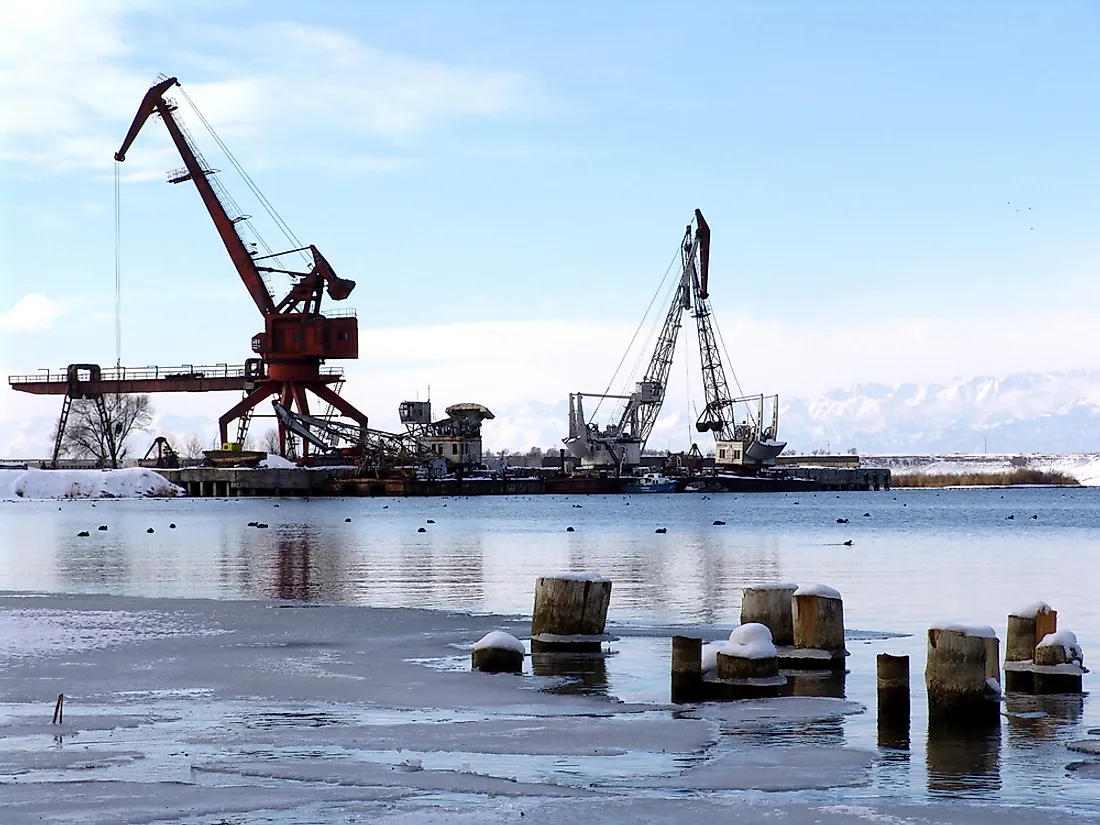The Biggest Industries In Turkmenistan

Turkmenistan is located in Central Asia, where it is one of the world's most rapidly developing economies. Many economists believe the economy of Turkmenistan is one of the fastest growing in the world. This country has a gross domestic product (GDP) of $95.5 billion, as calculated for purchasing power. With a total population size of over 5.6 million individuals, this country has a lower than average labor force when compared to other Central Asian countries. The average GDP per person here was approximately $11,630 in 2016, which represents a decrease over the previous year. An estimated .4% of the population lives below the poverty line, an impressive accomplishment in this region of the world. The unemployment rate of Turkmenistan is reported at 11%, however, this number could be affected by the informal market.
The economy of Turkmenistan is largely reliant on the extraction and exploitation of natural resources, like natural gas and petroleum. For example, experts estimate that Turkmenistan is home to the 4th largest natural gas reserve in the world. Although the majority of this country is made up of a desert climate, the agricultural sector (which relies heavily on irrigation systems) is an important contributor to the national GDP and employs nearly half of the entire workforce.
Industrial Sector
The industrial sector of the economy of Turkmenistan is the largest contributor to the national GDP at 49.3%. It only employs around 14% of the total labor force, however. Since gaining independence from the Soviet Union in the 1990s, Turkmenistan has been working toward increasing its industrial sector. This piece of the economy relies heavily on the natural resources available in this country, including gas and oil. Additionally, it processes a number of cotton items as well as chemicals. The construction industry is categorized within the industrial sector, although it primarily survives from government contracts. Currently, private businesses and residences are not being built at a significant rate when contrasted with government buildings. Turkmenistan has 3 cement factories located in the provinces of Balkan, Lebap, and Ashgabat. Together, these facilities produce over 2 million tonnes of cement annually.
Services Sector
The services sector employs 37.8% of the total labor force in Turkmenistan and contributes 37.9% of the total national GDP. This sector includes a large variety of businesses, including hospitality, tourism, retail, healthcare, communications, customer service, financial services, and banking institutions. Some of the services sector is under full government control, particularly the banking institutions and financial services. Because of this focus on government, the vast majority (95%) of lines of credit are issued to government institutions rather than to the public. This lack of access to credit may work to prevent the private sector from growing. The tourism industry in Turkmenistan has significant room for growth and is currently hampered by the political situation in this country. The number of foreign tourists visiting nearby countries has increased significantly over the last few years, which is a sign of the potential for this industry in Turkmenistan.
The Export Sector
The export economy of Turkmenistan is the 90th largest in the world. It imports around $5.54 billion and exports approximately $8.94 billion, which means this country has a positive trade balance. Its largest trade partners are: China ($7 billion), Afghanistan ($549 million), and Turkey ($542 billion). Mineral products make up the majority of the exports leaving this country with a total value of $8.19 billion. Within this category, petroleum gas is the largest product exported. It makes up 80% of exports at a value of $7.17 billion. After mineral products, the second largest export category is textiles. Textile exports are worth approximately $549 million. Within this category, raw cotton is the most widely produced product and makes up 2.6% of all exports at a value of $236 million. The third largest export category is plastics and rubbers, which have a total value of $84.1 million. This category is completely made up of propylene polymers, which is .94% of all exports.
Despite its goal of self-sufficiency, Turkmenistan also imports a number of products. The countries that provide the largest value of imports to Turkmenistan include Turkey ($1.85 billion), Russia ($843 million), and China ($813 million).











